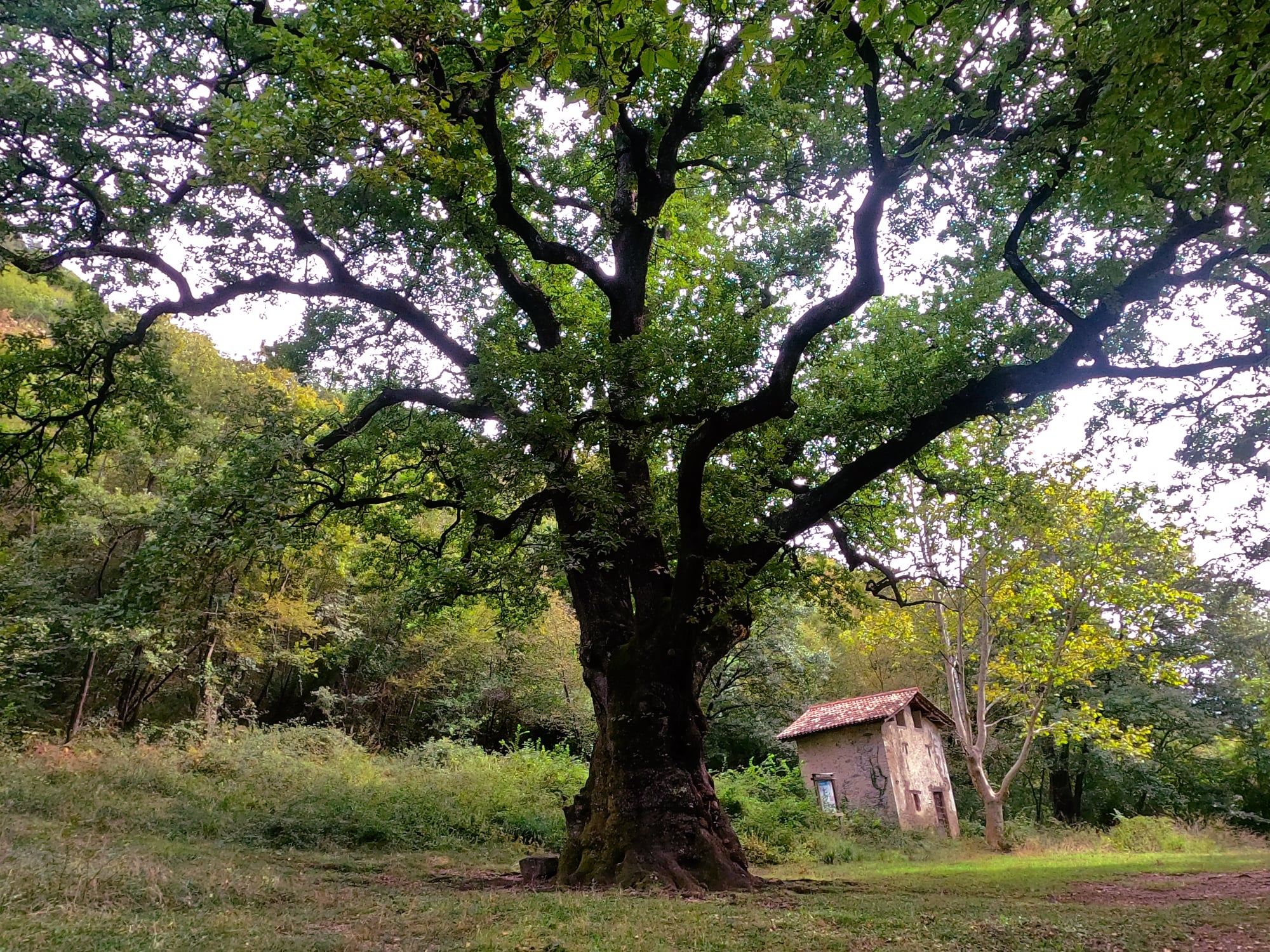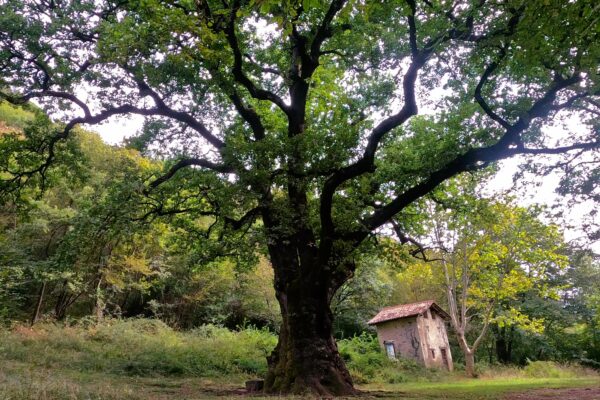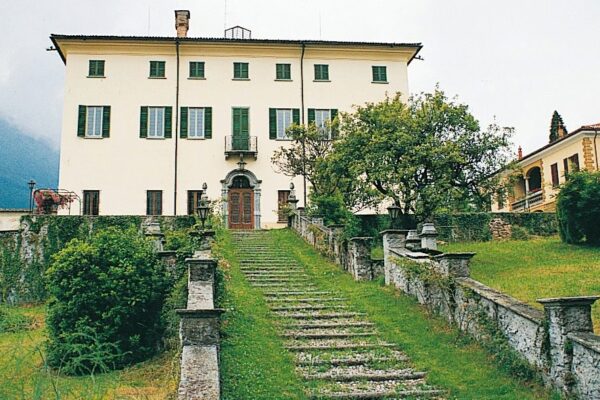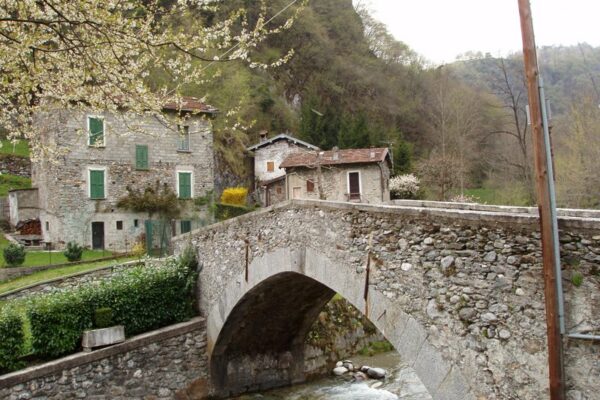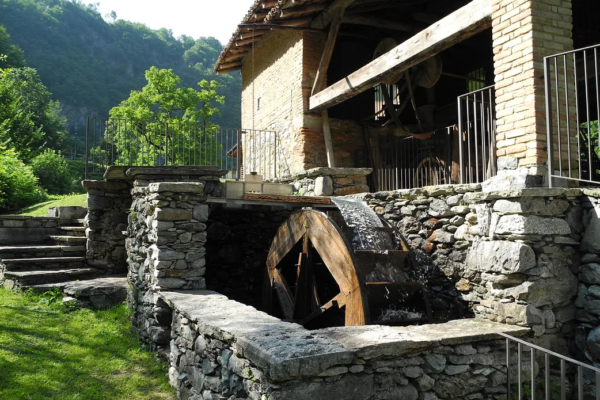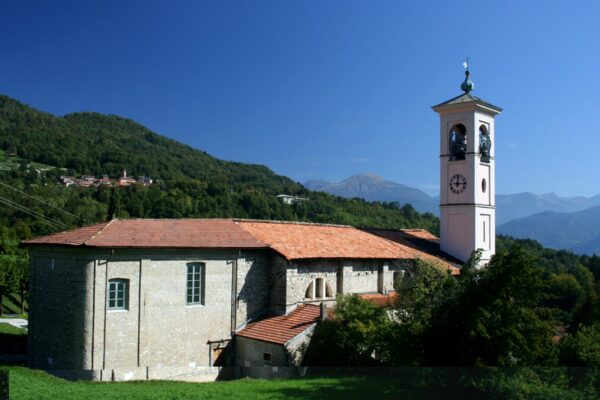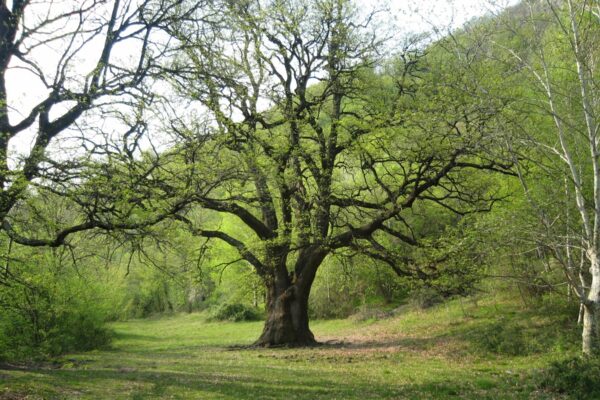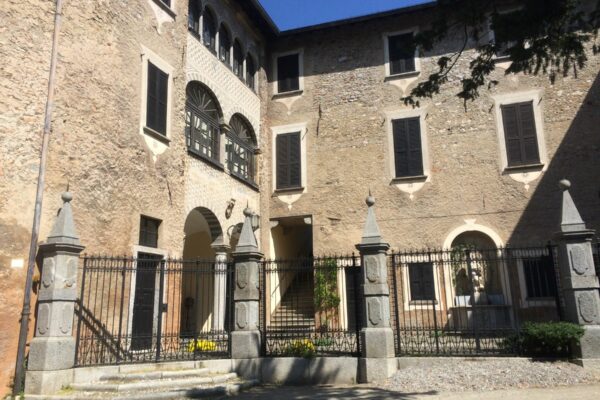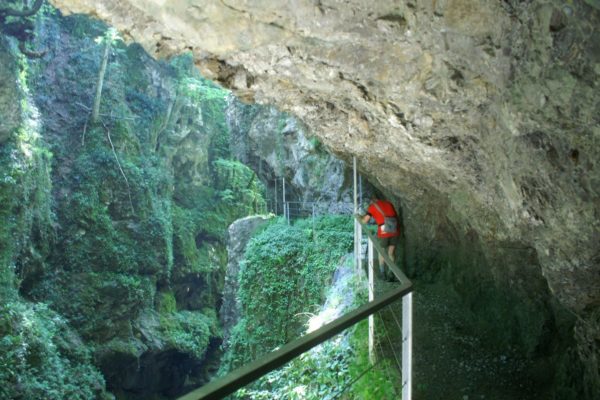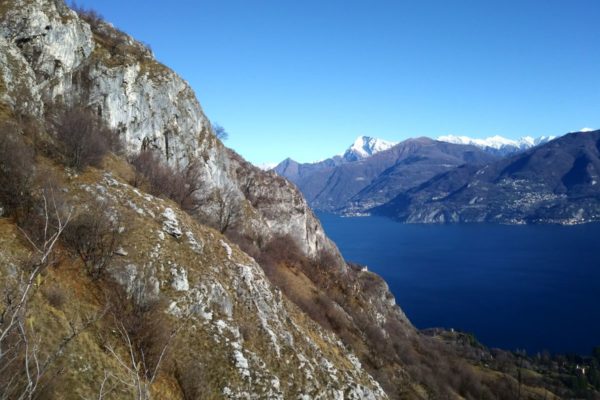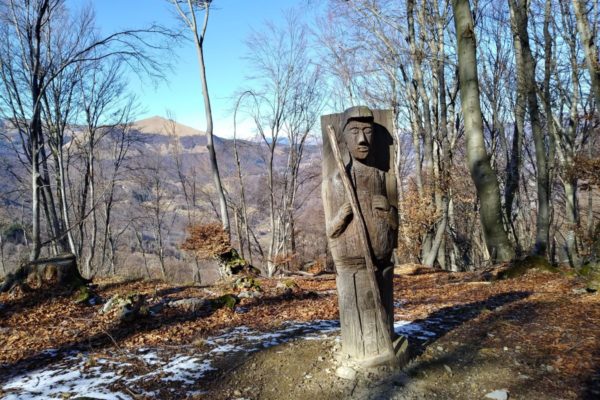On a plateau in the municipality of Grandola and Uniti at an altitude of 501 m there is “Il Rogolone” a large oak tree 25 meters high and 8 meters wide, the largest oak in northern Italy and one of the most majestic in Europe. It has been declared natural monument and it is the symbol of the Museum of the Val Sanagra Park. The walk to “Il rogolone” leads through woods, fields and rural villages.
Description
At Menaggio, from Piazza Garibaldi, take Via Calvi. At the end of it cross the main road and turn into Via Caronti, along the left side of the Parish church St. Stefano. At the end of the street turn right and after 30 m turn left into Via Castellino da Castello. This cobble stone alley leads to the upper part of the town called Castello. The “Castello” of today gives only a faint idea of how it was in the Middle-Ages. In fact it was completely destroyed in 1523 during the occupation by the Rhaetian militia. Left intact are parts of its enormous perimeter walls which you can admire at various points.
On the corner with Via Strecioum go up the long flight of steps to the left (Via Rezia) which lead to an underpass under the main road. Once at the other side of the underpass take Via Monte Grappa, which after 300 m leads on the main road 340. Cross it, then go up the steps and at the end turn right in order to pick up the cycle-footpath that follows the traces of the former railway line Menaggio – Porlezza.
The raiway line between Menaggio and Porlezza was opened in 1884 in order to attract more tourists from northern Europe to the area. Arriving by train to Lugano the tourists were then transported by steam boat to Porlezza from where the train brought them to Menaggio. After the first World War the train line was abandoned.
The first part of the track requires some attention as it is also accessible by cars until you come to a roundabout followed by a rest area equipped with a fountain and some benches. The track enters a e valley and passes a 90 m long tunnel. You reach the commune of Grandola ed Uniti (377 m) where the track ends onto the SP road of Grandola. Turn right in order to reach the centre of the beautiful village Cardano gathered around the splendid Villa Bagatti Valsecchi.
The origins of the Villa Bagatti Valsecchi go back to the 16th century; it was enlarged between the 17th and 19th century. The villa is built around two court yards on two different levels. One faces the gorge of the river Sanagra that flows 90 m below; the other court yard faces the historical centre of Cardano.
Continue along via Galbiati, and just past the church of S. Caterina you again end up on the road SP Grandola. Cross it and pick up Via Gonte that leads to the village Gonte. On the right side of the Church of S. Giovanni Battista, pik up Via alle Vigne.
The cart track leads out of the village along the Val Menaggio flanked by Monte Crocione (1640 m) and Monte Galbiga on the left and Monte Grona (1736 m) on the right. After about 1 km, at a fork near a house, keep right. After a brief strech through the woods you pass a small shrine on your right and, after 500 m, you reach another fork. Keep right. The trail ascends slightly in the middle of woods and fields. After you have crossed two small rivulets you arrive at the fork where you turn left (sign Rogolone). The walk continues through the woods and after a final steep climb you reach the clearing where the big oak tree “il Rogolone” stands. There is an information panel.
After admiring the majestic tree, pick up the trail up on the right side of the clearing. After a brief climb, turn right in the direction of Velzo (sign). After a walk of about 40 minutes the cart track eventually ends onto the Sp road Grandola. Cross it and pick up Via Cima that leads into the center of the rural village Velzo. At the house where the street splits, pick up Via Gottro to the right. Keep right and you come to a little piazza with a small chapel where you pick up Via Leopardi on the left. Past a washhouse you cross the road once more and pick up the mule track leading along the side of the beautiful parish Church S. Siro.
You reach the 17th century Villa Camozzi. It is the seat of the town hall of Grandola ed Uniti and of the Ethnographical and Naturalistic Museum Val Sanagra tel. +39 0344 32115.
The museum preserves evidence of the history and popular traditions of the valley. Various naturalistic environments are recreated here, including exhibitions of fossils and mushrooms, dioramas relating to fauna, a documental exhibition of the former Menaggio-Porlezza railway, a room dedicated to music and numerous tools belonging to peasant civilizations.
Cross the road near the sport center and pick up Via Mulino. Follow the indications for “agriturismo La Vecchia Chioderia” that stands on the river Sanagra. Until 1820 it was a mill and then a factory where nails were made. Now-a-days it is a trout farm with a typical inn, an ideal spot to try the local dishes.
Cross the bridge and follow the track along the river to the right that passes by the ancient kiln fornace Galli that has been recently restored and now hosts the seat of the Val Sanagra Park. The kiln is an example of industrial archeology. The water power of the river and its clay was used to make bricks and roof tiles.
A nice walk along the river brings you to Mulino della Valle. From here ascend the track to the left in the direction of Piamuro. You pass the little chapel of Artus (read the interesting legend) and then arrive at the big pasture called Piamuro. From here descend the road to the hamlet of Loveno with its splendid villas such as Villa Mylius Vigoni and villa Garovaglio Ricci.
Just past the church of San Lorenzo with its baroque facade, you walk down Via Garovaglio and pass the Loveno sport center. Pick up Via XXIV Maggio that passes villa Bel Faggio and ends in Via Sauro that you follow on the right along the side walk. Then, follow the sign, and take the series of shortcuts that lead back to the center of Menaggio.
More Information:
Rogolone and Rogolino
Rogolone and Rogolino are two monumental examples of oak, and are also known by the dialect names “Rugulon” and “Rugulin”. Located in the municipality of Grandola and Uniti, at an altitude of 450 m, they grow in a clearing belonging to the hamlet of Velzo, near the “Bosco Impero”. The Rogolone, in particular, is a centuries-old oak of exceptional dimensions: 8 m in circumference and 25 m in height, making it the largest oak in northern Italy and one of the most majestic in Europe.
The tree, owned by the association Italia Nostra, has been protected as a National Monument since 18th December 1928 and, since 2001, is also the symbol of the Val Sanagra Museum. The large dimensions of the two trees have in the past inspired legends and beliefs about their age: up to a few years ago it was thought that the Rogolone should be hundreds or even thousands of years old. Tradition linked the big oak tree to the place where the elders of the neighbouring villages had gathered to mark the borders between the territories, in the year 1530; according to other interpretations the two trees would have been the reference point of a place where, in ancient times, a pagan festival was celebrated in honour of spring accompanied by magic-religious rituals. Even until the ’80s there were beliefs that the plant was about 1500 years old. The disputes were resolved in 1988, when Italia Nostra organised a party at Rogolone entitled
“The Rugulon: the story of a tree”, during which the results of the dating carried out by the Dendrochronological Laboratory of Lausanne were made public: the Rogolone has been growing since 1730 and is therefore about 280 years old, while the Rogolino since 1820 and is 90 years younger.
